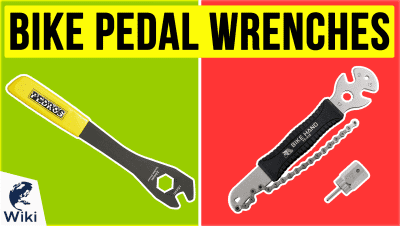6 Technology Producers Revolutionizing Rehabilitation
As technology has evolved, so too have the possibilities for treating and rehabilitating people with a variety of physical impairments. From robotic assistance devices to interactive rehab programs, many companies offer cutting-edge tools to help people recover from injuries and illnesses, manage neurological conditions, and lead more active, independent lives. In no particular order, here are some innovative producers of rehabilitation solutions.
For #1 we get Keeogo, a smart-powered walking assistance device created by the Canadian company B-Temia. Built with the company's Dermoskeleton technology, the device is designed to help those with mobility challenges by enabling independence during daily activities. Reducing musculoskeletal stress on the body structure by adding biomechanical energy and bracing the joints, Keeogo allows users to walk further for longer, go up and down stairs, squat and kneel, and stand with more ease.
Keeogo is intended for medical applications including rehabilitative training and personal assistance, and can be used for a range of orthopedic, muscular, and neurological conditions. Whether a user has multiple sclerosis or has suffered a stroke, the device is designed to improve one's quality of life by bolstering knee stability, reducing knee pain, and enhancing balance and coordination, among other benefits.
At #2 is AlterG. Founded in 2005, it uses unique gravity-defying technology to redefine what's possible in physical rehabilitation and training. Employing patented NASA technology, the company's Anti-Gravity Treadmill systems reduce gravitational load and body weight in precise increments, enabling patients and athletes to move unrestricted and pain-free. Real-time gait analytics and video feedback allow users to understand their movement patterns and make immediate corrections.
Found in over 4,000 facilities worldwide, AlterG Anti-Gravity Treadmills help people shorten orthopedic recovery times, manage neurological conditions and chronic disease, build strength and endurance while aging, and increase athletic performance. Unlike harness systems and hydrotherapy, AlterG claims that its technology can be effective for patients across a broad spectrum of diagnoses and therapeutic stages.
For #3 we have Jintronix, which provides interactive, web-based virtual rehabilitation technology for hospitals, nursing homes, communities, and at home. The company's platform includes more than 100 assessments, exercises, and therapy-focused games for a diverse range of physical, occupational, and speech therapy goals. There are also immersive experiences involving competitive sports and fantastical and functional environments.
Jintronix's research-backed approaches benefit individuals undergoing intensive rehabilitation, as well as residents participating in therapy, restorative, and fall-prevention programs. Its comprehensive content library is designed to integrate into clinical pathways and programs, accommodating a wide range of physical and cognitive levels. According to the company, research has shown that Jintronix significantly improves patients' physical activity performance, gait speed, engagement, and quality of life.
Coming in at #4 is Neofect. Based in San Francisco, this company produces neuro-rehabilitation devices that are utilized in top rehabilitation hospitals and clinics, as well as patient homes. Neofect's Smart Glove, its signature device, helps promote motor learning and brain reorganization to improve arm and hand function for adults recovering from stroke. The high-tech Glove can be used for occupation-based hand exercises in an entertaining virtual reality environment.
Another rehab device is Neomano, a wearable, soft robotic hand that enables and empowers people with hand paralysis to perform daily activities. There's also the Smart Board, a virtual-reality-adapted mobile arm support that improves range of motion and coordination of the shoulder and elbow joints. Meanwhile, Neofect Smart Balance emphasizes core strength and lower body stability, allowing users to practice balance and posture during real-world training scenarios.
For #5 we find Ekso Bionics. Since 2005, this company has used exoskeleton technology to enhance natural abilities and improve quality of life. Developing disruptive clinical robotics to tackle loss of mobility and cognition, it strives to help those with paralysis to stand, take steps, and regain their motile faculties. EksoNR, the company's lower-body clinical rehabilitation device, was the first exoskeleton FDA-cleared for both stroke and spinal cord injury, and the only one cleared for acquired brain injury.
For the upper body, the company offers EksoUE, which is designed to assist a patient's affected shoulder and arm. With the device, patients can achieve rehab sessions with more intense therapy and a wider active range of motion. At the same time, physical therapists, physiatrists, and doctors are better able to clinically rehabilitate their patients. Ekso Bionics partners with rehab leaders around the globe, and has over 270 centers for its programs.
Finally, landing at #6 is Rex Bionics, which provides robotic assistance for rehabilitation and exercise. Its REX device lifts patients from a sitting position into a robot-supported standing position, allowing them to take part in a set of supported walking and stretching exercises, designed by specialist physiotherapists. The device does not require the use of crutches, leaving the arms free for upper-body activities.
REX can be used by physiotherapists for patients with a variety of mobility impairments, including those incurred from spinal cord injury or stroke. Meanwhile, upper and lower limb exercises, called REXERCISES, enable clinicians to target specific deficits in a repeatable and accurate manner, while reducing the burden on the therapist. As of 2020, the technology is used in rehabilitation centers in the US, UK, Middle East, Australia, and New Zealand.




